English name: The Temple of Bell
Full name (Thai): วัดระฆังโฆสิตารามวรมหาวิหาร
Full name (Transliterated): Wat Rakhang Kositaram Woramahaviharn
Type: Buddhist temple
Admission fees: Free
Originally posted: August'2009
"Rakhang" (ระฆัง) is bell in Thai language. An ancient bell was discovered in this temple grounds during the Ayuthaya period hence the given name of this temple. The original name of this temple was Wat Bang Wa Yai. Although the bell has since been transferred to Wat Phra Kaeo by the order of King Rama I (1737 - 1809), the temple has also been renamed to Wat Rajakhanthiyaram. This temple is still commonly known as Wat Rakhang till now.
Wat Rakhang belongs to the Royal Temples of second grade.
Located on the western bank of the Chao Phraya river. Most visitors arrive at the temple via Tha Chang (Chang Pier) on the eastern bank. Tha Chang is a short walking distance from the Grand Palace. Details of the neighborhood can be found in Google Map at the foot of this post.
- Wat Rakhang from Tha Chang

After disembarkation, Wat Rakhang is a mere 20m inland walk. The narrow path leading to the temple is dotted by make-shift stalls on both side. This is a small animal market where Buddhist devotees buy fishes, birds or small animals to make merit by setting them free.
- Arriving at Tha Rakhang (Rakhang Pier)
We are regular patrons to the stall, in the first picture, tendered by the friendly old lady donned in pink. There is a small paper slip in the blue bucket on the 3rd picture. Prayer (in Thai script only) is printed on the slip and devotees kneel and chant accordingly when making merit by the river next to the Rakhang Pier.
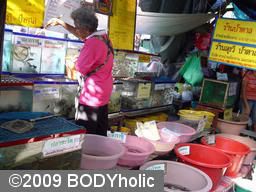
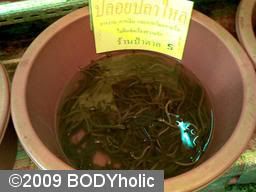
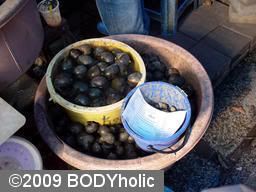


The temple completed its restoration work for the entire temple last year..
- The temple façade
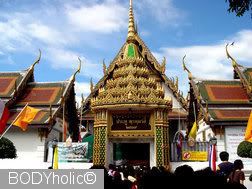
The Ubosot (Ordination Hall) faces directly to the east entrance which opens to the stalls that I meantioned earlier. Two smaller praying chambers are located on the left and right of this entrance.
- Ubosot (Exterior)
- The roof and its Chofah
- Taken when it was raining.
- Front entrance. Picture taken from the left of the ordination hall.
- This is the right flank. At the center of the picture is one of the eight boundary stones surrounding the Ubosot.
- The left flank.
- And finally the rear entrance of the ubosot. I have never seen these doors opened before.
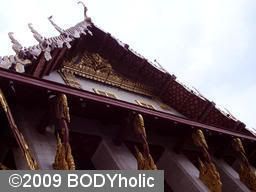
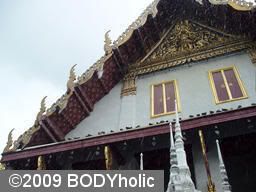
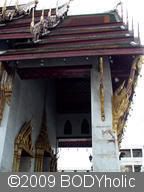
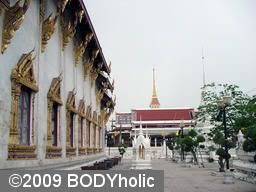
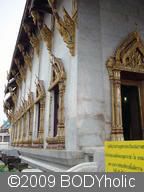
- Ubosot (Interior)
Note: Leave your shoes at the concrete steps before entering the ubosot.
- At the center of the altar is a Buddha image in Mediation posture (Dhyana Mudra).
- As above.
- There is a red-carpeted raised platform on the left side of the ubosot where monks make their daily prayers. Also not to be missed is the lacquered wooden window panes on both sides of the hall. Three bells painted in gold with intricate details, arranged vertically, can be seen on each pane.
- Sacred mural painted on the inner walls.
- As above.
- Fine prints on the ceiling.
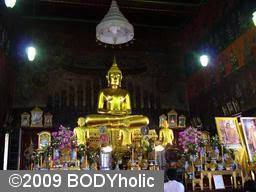
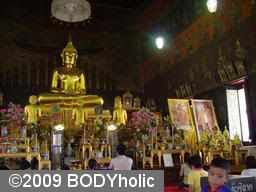
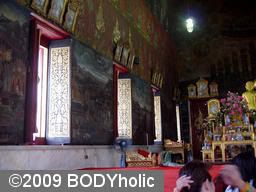
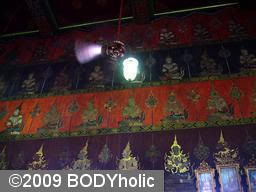
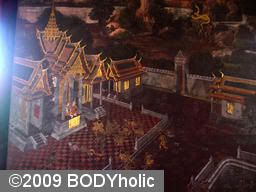
- Around the temple
- The bell tower in front of the Tripitaka Hall.
- Chedi.
- Phra Prang.
- One of the eight boundary stones around the Ubosot.
- Entrance to one of the two praying chambers near the east entrance of Wat Rakhang.
- This is the other praying chamber directly across the above.
- Exquisite! Could't remember where was this taken though.
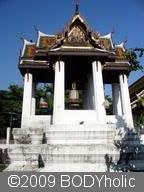
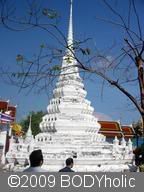
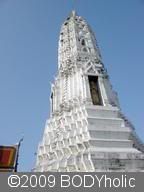
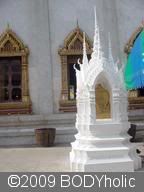
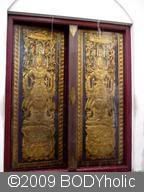
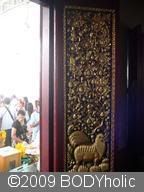
For now, I left out my favorite spot, the Hor Trai (The Tripitaka Hall), of Wat Rakhang in this post, because it is getting lengthy here. More on the sacred hall on my next post. :)
Getting there ...
Take a cab to the Chang Pier (Tha Chang) near the Grand Palace. After which, catch the river crossing ferry (THB3) to cross the Chao Phaya river. Wat Rakhang is only a stone throw away from the opposite pier, Tha Rakhang.
View Wat Rakhang in a larger map
References ...
Chimburi.com - Wat Rakhang
SunThai - Wat Rakhang

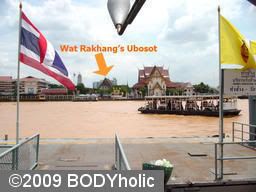
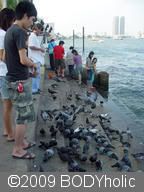
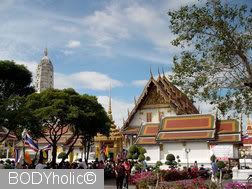

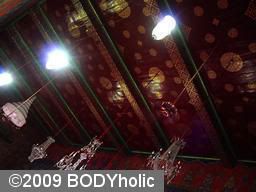
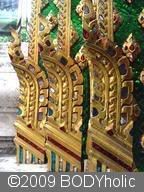
 BODYholic, also known affectionately as
BODYholic, also known affectionately as 







No comments:
Post a Comment